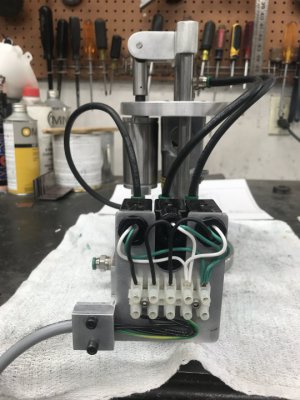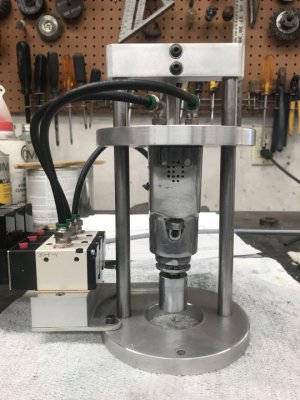Hello, I built this over the last several weekends, it utilizes 1/2 guide rods and an 1.5 bore x 1" travel air cylinder with internal return spring and 3 air solenoids on a common manifold. It is controlled by a maintained push button for the down motion and a SPDT momentary spring return for the forward reverse rotary motion. The only real problem I ran into was that the down motion is so rapid it would dislodge the socket at the end of the travel limit. The simple solution was to open the existing socket keeper hole to a #7 drill and tap to a 1/4 20 for a set screw.
No more problems with a dislodged socket.

No more problems with a dislodged socket.




